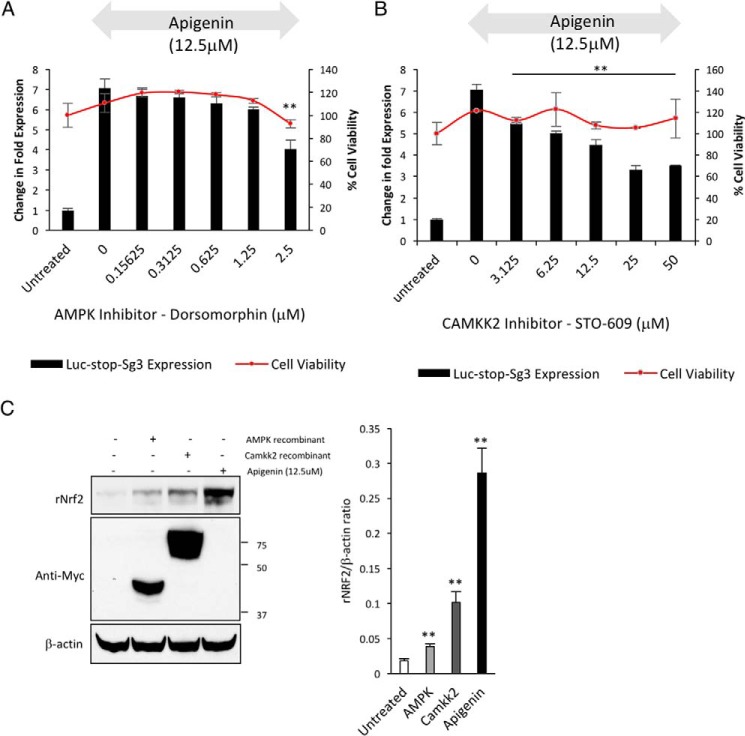Figure 7.
AMPK and CAMKK2 regulate Nrf2 translation. HEK293T cells transfected with the Nrf2 translation reporter (Luc2–Sg3Nrf2) were pre-treated with increasing doses of an AMPK inhibitor (A) and a CAMKK2 inhibitor (B) for 2 h before stimulation of Nrf2 translation with apigenin for 24 h. The fold change in the expression of luciferase after apigenin treatment with or without the presence of increasing doses of the inhibitor was calculated (n = 6). The statistical significance of the difference in the reduction of luciferase expression after stimulation with apigenin in cells treated with the kinase inhibitor versus non-treated cells is indicated by **, p < 0.01. The cell viability of the cells under treatment was evaluated in parallel with Cell-Titer Glo to verify the absence of the reduction in cell viability with the treatments higher than 15% (n = 6). C, HEK293T cells were co-transfected with wild-type Nrf2 and activated AMPK or Camkk2 to evaluate the effect of the kinases on the expression of Nrf2. The expression of recombinant wild-type Nrf2 was detected by Western blotting 24 h after co-transfection (n = 3). The overexpression of the recombinant kinases was verified by Western blotting with an anti-c-Myc antibody, and β-actin was used as a loading control. The relative intensity of the bands for Nrf2 is indicated as a ratio with β-actin as a loading control. The statistical significance of the difference in the levels of expression of Nrf2 in cells co-transfected with the active kinases versus untreated cells is indicated by **, p < 0.01.

